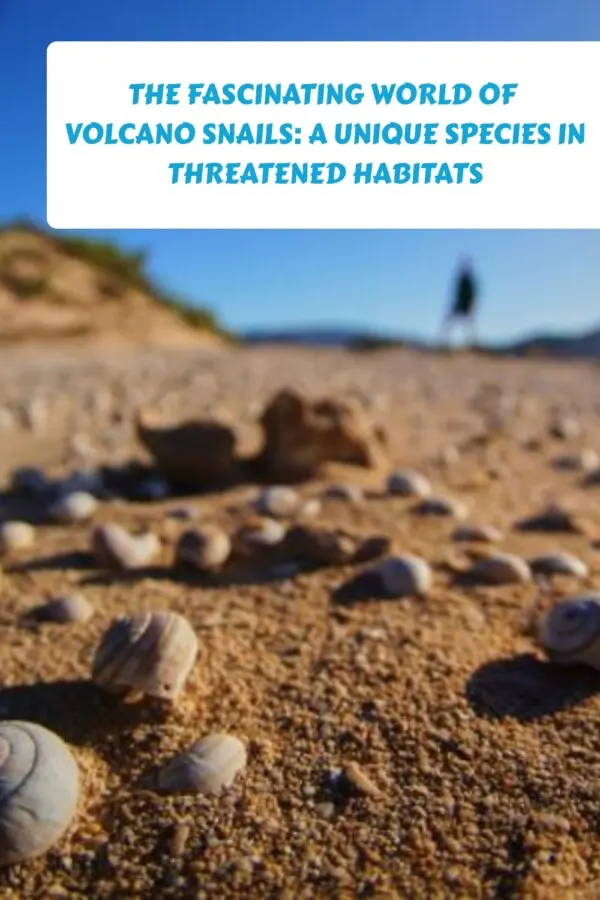Imagine a creature so tenacious and resilient it thrives where few others dare to venture – the scorching, sulfurous world of active volcanoes. This is no tale from a science fiction novel, but the extraordinary life story of the Volcano Snail. Driven by the intensity of survival, it braves an environment deemed hostile for most life forms on Earth.
But even as we marvel at their resilience, these tiny yet awe-inspiring creatures confront an alarming reality: their unique habitats are under grave threat from climate change and human activities.
As you explore this blog, prepare to delve into an intriguing ecological narrative that defies common perception and demands urgent conservation action. Brace yourself for an incredible journey into the fascinating, dangerous world of Volcano Snails!
Volcano snails, also known as scaly-foot gastropods or Chrysomallon squamiferum, are fascinating creatures found in the Indian Ocean’s hydrothermal vents. These endangered snails have unique shells composed of iron sulphides and incorporate iron sulfide into their skeletons, making them the only known animal to do so. Their scaly foot gastropod is armored with iron-mineralized sclerites, and they house symbiotic bacteria in their oesophageal gland for nourishment. Unfortunately, deep-sea mining poses a significant threat to their vent habitat, leading to their listing as endangered on the IUCN Red List.
Unveiling the Mystery of Volcano Snails

Hidden deep within the mesmerizing depths of the Indian Ocean, a fascinating and mysterious creature resides – the volcano snail. Also known as scaly-foot snails (Chrysomallon squamiferum), these extraordinary gastropods have captured the attention of marine biologists and nature enthusiasts alike. With their unique adaptations and incredible resilience, volcano or scaly foot snails have become a subject of fascination and intrigue for scientific community.
At first glance, one might not expect such peculiar creatures to inhabit the hydrothermal vents that dot the ocean floor. These vents emit scorching hot water, reaching temperatures of up to 750 degrees Fahrenheit. Yet, against all odds, the volcano snails have endured these extreme conditions. Their remarkable ability to survive near these active hydrothermal vents is a testament to their exceptional adaptations.
These remarkable creatures possess shells made of iron, making them one of a kind in the world of snails. The composition of their shells includes iron sulfides such as greigite and pyrite, which can actually rust or tarnish over time. Adult volcano snails often exhibit corroded tips on their shells, indicating that they can indeed rust. Some individuals even showcase an intriguing orange tint caused by iron oxide tarnishing.
The distinctive feature that sets them apart from other snail species is their sclerites – armor-like structures of iron sulfates covering their bodies. These sclerites protect potential predators in this harsh environment.
Imagine venturing into a place where temperatures soar to extreme heights and encountering creatures with stunning shells made of iron, an element we associate more with industrial use rather than living organisms. The mere existence of these volcano snails challenges our understanding of what life can endure and adapt to.
Volcano snails are considered quite sensitive when it comes to temperature preferences. They thrive withstand temperatures from 0°C to 10°C, with their preferred temperature hovering around 5°C. Beyond this narrow spectrum reach temperatures, their physiology becomes compromised, showcasing the delicate balance they maintain within their unique habitat.
It is important to note that volcano snails aren’t simply curiosities of marine biology. They play a crucial role in the fragile ecosystem surrounding hydrothermal vents. Through their interactions with their environment and symbiotic relationships with bacteria in their oesophageal gland, these snails contribute to the overall biodiversity and functioning of these threatened habitats.
Now that we have unraveled some of the mysteries surrounding volcano snails and their extraordinary adaptations, let’s delve deeper into their fascinating physiological characteristics.
- The Scaly-Foot Gastropod, commonly known as the Volcano Snail, has a unique three-layered shell composed of iron sulphides in the outer layer – making it the only known extant animal to incorporate iron sulphide into its skeleton.
- As of 2019, the International Union for Conservation of Nature (IUCN) listed the Volcano Snail as endangered due to threats from deep-sea mining operations affecting its tiny habitat area of less than 0.02 square kilometers.
- The Volcano Snail is endemic to the Indian Ocean, specifically found at depths of around 2,400 to 2,900 meters near hydrothermal vents; since its discovery in 2001, research expeditions have uncovered these life forms in just three locations: the Kairei vent field (2001), Longqi vent field (2007), and Solitaire field (2009).
Physiological Characteristics
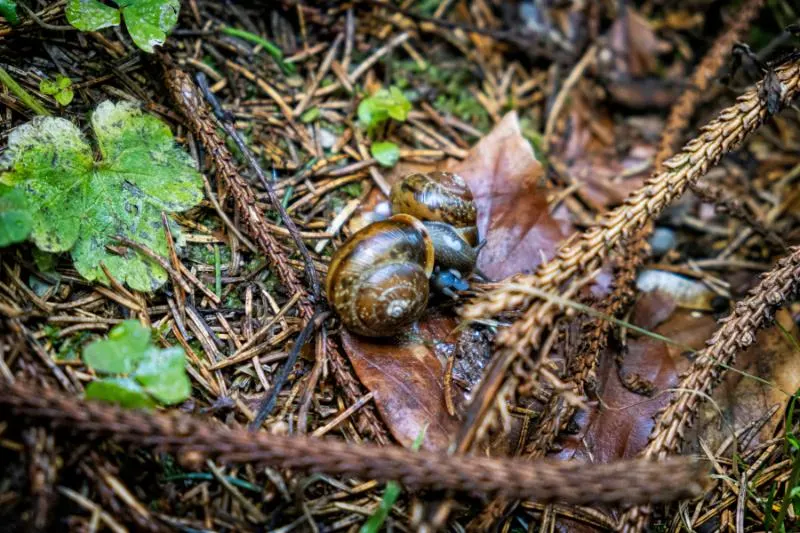
Volcano snails possess a range of intriguing physiological adaptations that allow them to thrive within the harsh conditions of hydrothermal vent environments. One remarkable feature is their ability to incorporate both iron ions and sulfides into the construction of their shells — a process not observed in any other known living organism.
The unique three-layered shell structure of volcano snails plays a vital role in protecting these gastropods against their surroundings’ extreme temperatures, atmospheric pressure and chemical composition. The outermost layer consists of iron sulfides, forming a robust armor-like shield. This iron layer provides exceptional resistance to the corrosive properties of the hydrothermal fluids emitted by the vents.
Beneath the iron layer lies a middle layer equivalent to the organic periostracum found in other gastropods’ shells. This layer reinforces the overall structure and offers additional protection against potential damage.
Finally, the innermost shell layer is composed of aragonite, a form of calcium carbonate like that found in many other snail species. This combination of materials creates an intricate and well-adapted defense mechanism that keeps these snails safe within their extreme habitat.
Another captivating aspect of volcano snails’ physiology is their symbiotic relationship with bacteria. Within their oesophageal gland, these snails house specific bacteria that nourish their digestive system and aid digestion. This mutually beneficial partnership ensures a constant food source for the snails while contributing to the overall biodiversity of the vent ecosystems.
These tiny creatures rely on their bacterial partners to convert the surrounding chemicals into sustenance within their esophagus. It’s a remarkable example of nature’s ability to form complex symbiotic relationships to overcome challenging environments.
Understanding the physiological characteristics of volcano snails deepens our appreciation for their incredible adaptation and allows us to grasp the fragile balance within their threatened habitats.
See Related: These Funniest Animals Will Brighten Your Day
Unique Iron-Made Shells
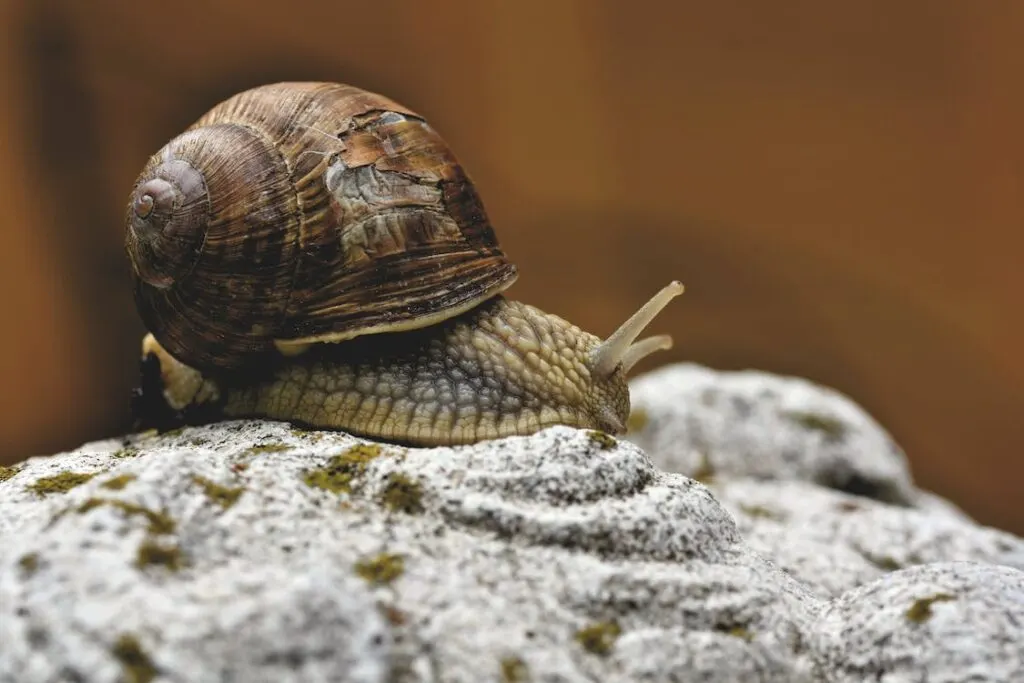
The volcano snails, also known as scaly-foot gastropods or Chrysomallon squamiferum, possess a remarkable feature that sets them apart from other species – their shells are made of iron. These unique iron-made shells have captivated the attention of scientists and researchers worldwide due to their extraordinary composition and properties.
Imagine holding in your hands a shell that is not only beautiful but also contains an element commonly associated with strength and durability – iron. The shells of volcano snails consist of iron sulphides, specifically greigite and pyrite, which give them their distinct coloring and composition. This is an exceptional adaptation to their extreme environment.
One intriguing aspect of these iron-made shells is their ability to corrode or rust. While most organisms with shells, like mollusks, rely on calcium carbonate for shell construction, volcano snails take a different approach. The iron sulphides in their shells can rust/tarnish when exposed to various conditions, resulting in shades of orange or brown on the shell surface. This natural phenomena further adds to the allure and uniqueness of these snails.
The incorporation of iron into their shells provides not only a striking aesthetic but also potential benefits for the snails themselves. Iron is a robust material that offers protection against predators as well as resistance to high temperatures found near hydrothermal vents where these snails reside. Iron-mineralized sclerites on the snail’s foot further enhances its armor-like defense mechanism.
It is important to note that while iron sulfide can be susceptible to corrosion, the innermost layer of the shell is made of aragonite, which provides structural support and stability to withstand the harsh deep-sea environment.
The unique construction of these iron-made shells highlights volcano snails’ incredible adaptability and resilience in their highly specialized habitat.
Now that we have explored the fascinating aspect of volcano snails’ unique iron-made shells, let’s delve into their equally intriguing habitat and how they have adapted to it.
The Habitat of Volcano Snails
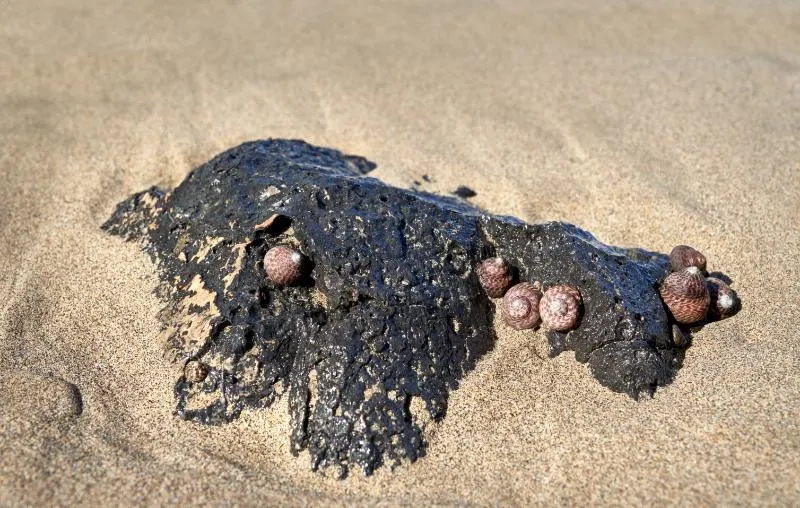
Volcano snails live and thrive in one of the most extreme environments on Earth – hydrothermal vents. These vents are found deep beneath the ocean surface, where volcanic activity releases hot water, gases, and minerals into the surrounding seawater. This harsh and inhospitable environment would be lethal for many organisms, but volcano snails have remarkably adapted to survive and even flourish in these threatening habitats.
Hydrothermal vents can reach staggering temperatures that soar up to 750 degrees Fahrenheit. Despite these scorching conditions, volcano snails have found a way to endure and utilize their surroundings for survival.
These unique creatures have a preferred temperature range of 0 to 10 degrees Celsius (32 to 50 degrees Fahrenheit), with an ideal temperature of around 5 degrees Celsius (41 degrees Fahrenheit). They can thrive by living close enough oxygen get to the cooler outflow regions near the hydrothermal vents, where the temperature is more suitable for survival.
The abundance of mineral-rich waters and chemical emissions from the hydrothermal vents provides an ample food source for volcano snails. Their diet mainly consists of bacteria and other small organisms that thrive in this extreme environment.
Imagine being able to find nourishment and sustenance in an environment that seems inhospitable to most forms of life. This remarkable adaptability speaks volumes about the adaptiveness and resourcefulness of volcano snails.
Furthermore, these unique mollusks have also evolved specialized adaptations to cope with the high levels of toxins present in their environment. They possess specific proteins that allow them to detoxify heavy metals commonly found around hydrothermal vents, enabling only species of them to survive in an area that would be toxic for many other organisms.
As we continue to explore the fascinating world of volcano snails, let us further delve into their ability to adapt and thrive in the challenging conditions of hydrothermal vents.
Adapting to Hydrothermal Vents
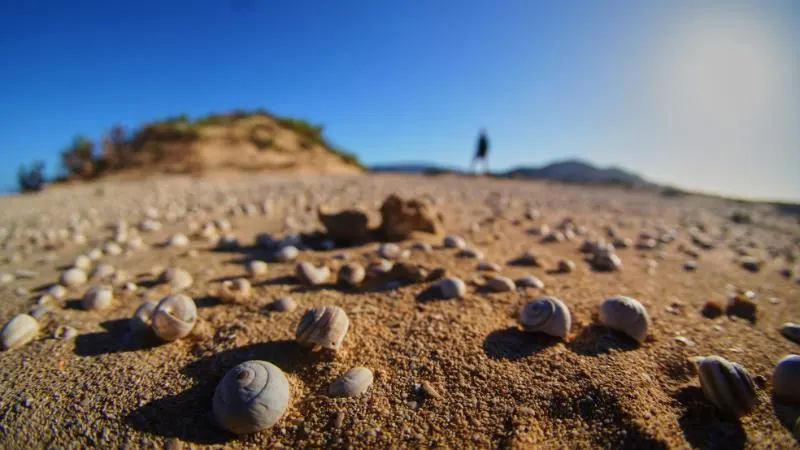
Deep-sea hydrothermal vents are one of the most extreme and inhospitable environments on our planet. These volcanic fissures emit scorching-hot water, toxic chemicals, and are subject to immense pressure. Amidst this harsh environment thrives an extraordinary creature: the volcano snail. This unique species has evolved remarkable adaptations that enable its survival in such extreme conditions.
The volcano snail, also known as the scaly foot snail two-foot snail, possess a body composition like no other animal on Earth. Its shell is made up of three layers, with the outer layer containing iron sulfides, giving it a distinctive metallic appearance. In fact, it is the only animal known to have a mineralized iron snail body. This exceptional adaptation not only provides protection against the harsh surroundings but also makes the scaly foot snail’s shell potentially valuable for scientific research.
The foot of the volcano snail is reinforced with hundreds of iron sclerites, giving it a very scaly foot texture. These sclerites act as armor, protecting the delicate tissues from both extreme temperatures and predators in the vent environment. It’s fascinating to think about how this mollusk has adapted over time to develop a suit of natural armor that enables it to navigate and survive in such hostile conditions.
To put things into perspective, imagine donning an exoskeleton composed of iron to withstand blistering heat and crushing atmospheric pressure while exploring an underworld of boiling water and noxious gases. The volcano snail has essentially accomplished this feat through its remarkable adaptations.
Additionally, unlike most animals that rely on external sources for energy through food consumption, volcano snails have created a unique symbiotic relationship with bacteria. These bacteria reside in their esophageal gland and provide them with energy by producing sugars through chemosynthesis using chemicals from the hydrothermal vents. This adaptation allows the snails to thrive without the need for traditional feeding, an exceptional feature that sets them apart from other species.
The Threat to Volcano Snails’ Survival
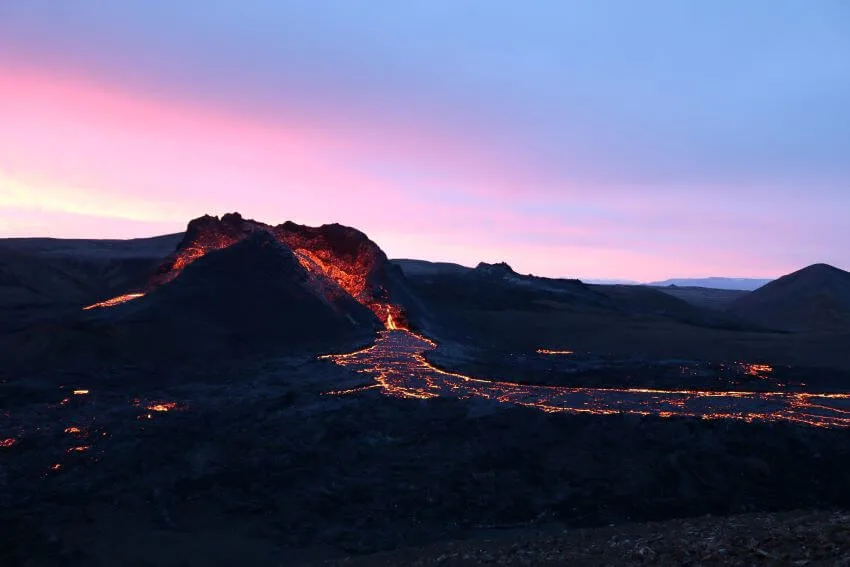
As intriguing as the volcano snail’s adaptations are, these remarkable creatures face a grave threat to their survival. Human activities, particularly deep-sea mining and exploration, pose significant risks to their delicate habitats. These activities involve extracting valuable minerals, such as copper, gold, and silver, from the ocean and deep sea floor below, often in the vicinity of hydrothermal vents.
The potential destruction caused by seabed mining can have severe implications for the volcano snails’ habitats. The extraction process can disrupt the fragile ecosystems surrounding hydrothermal vents, irreparably damaging the specialized habitats that these snails rely upon. Disturbing or destroying these delicate environments could lead to catastrophic consequences for not only the volcano snails but also other unique species that depend on these ecosystems for their survival.
It is essential to understand the long-term ecological impact of deep-sea mining and find ways to balance human activities with the preservation of these critically important habitats. To better comprehend the magnitude of this threat and explore potential solutions, let’s delve deeper into the impact of deep-sea mining on volcano snails and their unique ecosystems.
Impact of Deep-Sea Mining
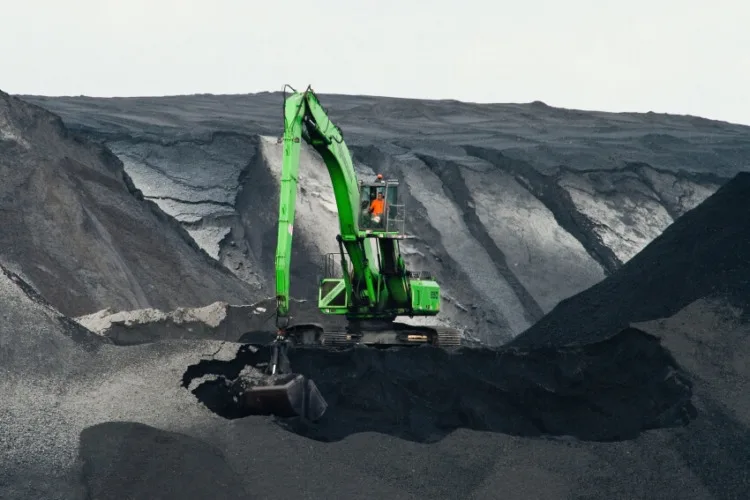
Deep-sea mining has emerged as a potential threat to the fragile and unique habitats that exist in the deep ocean, including those inhabited by volcano snails. The allure of valuable minerals such as copper, manganese, and cobalt found in polymetallic nodules or hydrothermal vents beneath the seafloor has sparked interest in mining ventures. However, the extraction process can have significant ecological consequences.
Just as land-based mining operations can cause habitat destruction and pollution, deep-sea mining poses similar risks endangered species. The physical disturbance caused by mining activities, such as the use of large machinery and dredging equipment, can disrupt sediment layers and destroy delicate ecosystems.
This disruption can have cascading effects on the biodiversity supported by hydrothermal vent systems, potentially jeopardizing species like volcano snails that are uniquely adapted to these environments. To better understand the impact of deep-sea mining on volcano snails and other vulnerable species, extensive research efforts are underway.
See Related: Are Bears Color Blind? Unveiling the Truth About Their Vision
Significant Discoveries and Future Research Directions

The recent discovery of volcano snails in volcanic cavities beneath hydrothermal vents highlights the incredible diversity and adaptability of life in these extreme deep-sea environments. These fascinating creatures have evolved specialized adaptations to survive in high-pressure, high-temperature conditions that would be inhospitable to most organisms.
The findings from this expedition, led by Dr. Monika Bright and her international science team, shed light on previously unknown aspects first species of volcano snail biology and provide invaluable insights into their unique adaptations. The expedition discovered new species and revealed evidence of vent animals traveling underneath the seafloor through vent fluids to colonize new habitats.
This groundbreaking research opens up avenues for further exploration in nature ecology and understanding of deep-sea ecosystems. Future research directions may involve investigating how volcano snails withstand extreme temperatures, pressures, and chemical conditions near the deep sea hydrothermal vents. Scientists can also explore the interplay between different hydrothermal vent field and organisms and their dependencies.
For instance, understanding the relationship between volcano snails and chemosynthetic bacteria is crucial, as these bacteria form the base of the food chain in hydrothermal vent ecosystems. Exploring the potential impact of deep-sea mining on these bacteria could help predict how changes to their populations might reverberate through the entire ecosystem.
It is essential to the scientific community to prioritize further exploration and research efforts to better comprehend these unique habitats and the organisms that inhabit them. By gaining a deeper understanding of volcano snails and other deep-sea species, we can strengthen conservation measures and advocate for the protection of these fragile ecosystems.
Related Resources:
- Crow vs Raven: Understanding the Key Differences
- Are Beetles Bugs or Insects? The Definitive Answer
- Best Me Mother Earth Products: Eco-Friendly Choices

